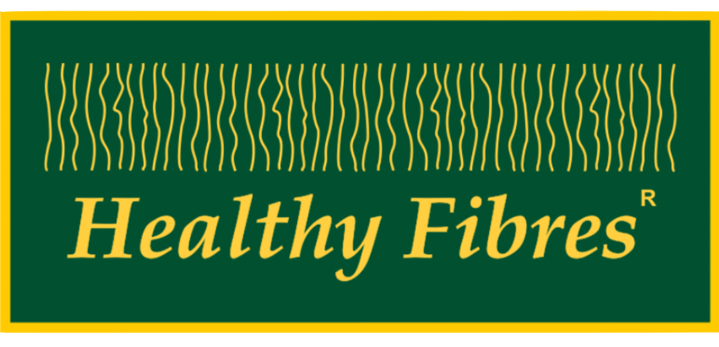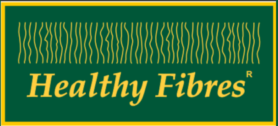Sharbati Wheat for Soft Chapatis
The Golden Grain
“Sharbati” is the most premium type of wheat available in the country. This variety of wheat is grown in abundance in Sehore town, Madhya Pradesh. The black alluvial fertile soil in this region plays a vital role in making Sharbati wheat much different from other types of wheat. Sharbati wheat is also called The Golden Grain for its pleasing golden color. The density of this grain is more when compared to other varieties. The sweet taste and health benefits of this grain make this the first choice of every health-conscious household.
The region growing Sharbati wheat does not necessarily have organized large-scale cultivation of this crop. Being rainwater irrigated, the soil for Sharbati wheat is high in potash content and low in humidity. This amazingly ends up increasing the protein content of the wheat by almost 2% more as compared to other Stone Ground wheat atta. Due to this no pesticides are required to grow Sharbati wheat. Hence the flour from the Sharbati wheat crop automatically qualifies as better flour over the rest.

Change your Lifestyle with Healthy Fibres Sharbati wheat flour
Consumption of this wheat flour curbs the carbohydrate intake organically. Each serving of the Sharbati wheat flour has approximately 110 calories, 23 grams of Carbs and 4 gram dietary fibre. This leads to the wellness of every family.
Nutritional Values and Structure of Stone Ground Whole Wheat Grain
The Stone GroundWhole wheat is divided into three parts namely Bran, Endosperm and Germ.
Bran
The outer layer or the seed covering is called the stone ground wheat bran which protects the kernel. The bran comprises about 15 percent of the seed weight. Bran is nutritionally rich in protein. This is a good source of many nutrients and protein and it is relatively low in calories. It’s a very good source of dietary fiber as well.
Endosperm
Endosperm is the main part of the seed and it accounts for 80 percent of the seed weight. It is the potential white flour within the center of the wheat grain. The endosperm contains the greatest share of protein, carbohydrates and iron, as well as the major B-vitamins such as riboflavin, niacin, thiamin and iron. It is also a source of soluble fiber.
Germ
The germ is responsible for germination when planted in soil.
It is a rich source of B-complex vitamins, oil, vitamin E and natural plant fat.
The wheat germ is the embryo that would eventually develop into the wheat plant. Consequently, it is often used in health foods, such as fortified bread and wholemeal flour.
Benefits of Stone Ground Wheat Flour
Healthy Fibres stoneground wheat flour is whole grain flour produced by traditional grinding methods between two stones (Chakki) is not a refined wheat flour or Atta. In addition to being a rich source of vitamins and minerals, stone ground whole wheat flour contains high levels of dietary fiber. Chapattis made out of this stone ground whole wheat flour are not only soft but have better texture, taste and innumerable health benefits.
Slow grinding process ensures low heat and less friction hence stone ground whole meal flours are always rich in its nutritional content.
Stoneground flour VS roller milled (industrially ground) flour
Stone mills are the oldest attrition mills used for making whole grain flours which simultaneously use compression, shear, and abrasion to grind wheat kernels between two stones and produce a theoretical extraction rate of 100%…….
Modern Roller mills have metal plates which results in higher heat generation during the milling process. This ends up causing considerable damage to starch, protein, and unsaturated fatty acids which are contained in the grain.
Popular Indian delicacy for healthy breakfast
Aloo Paratha using Sharbati Wheat Flour
This delicious snack is one of the most loved breakfasts in Punjab and other parts of India. The crispy outer layers made from the Sharbati stone ground whole wheat flour dough and the soft filling of boiled potatoes mixed with Indian spices make this humble snack the first choice of every food lover.
To make aloo ka paratha you need two main components:
1. Dough made from Healthy Fibres Sharbati wheat flour
2. Mashed potato stuffing with spices
Cooking Method
1. Pressure cook 4 medium-sized potatoes in water for 8 to 10 minutes. Peel the potatoes when cool and mash them.
2. Add 2 finely chopped green chillies ½ teaspoon of Healthy Fibres Red chili powder and a bit of Garam Masala powder. Salt to taste. Thoroughly mix the spice powders and green chillies into the mashed potatoes. Aloo stuffing is ready.
3. In a separate bowl take 2 cups Healthy Fibres bran rich Sharbati stone ground whole wheat flour, add ¼ teaspoon of salt, 1 tablespoon Healthy Fibr Cold Pressed Groundnut oil or Desi Cow ghee and prepare the dough with ½ cup water. Allow it to rest for 20 to 30 minutes.
4. Make two small balls from the dough. Flatten them with a rolling pin into 6 inches round Chapati.
5. Keep the potato stuffing in between two chapatis and gently press the edges to seal the stuffing tightly.
6. Dust some flour on the stuffed chapati and start rolling gently.
7. Spread ghee on a hot tawa and place the rolled paratha to get a crispy outer layer.
Enjoy hot Aloo parathas with your dear ones.

